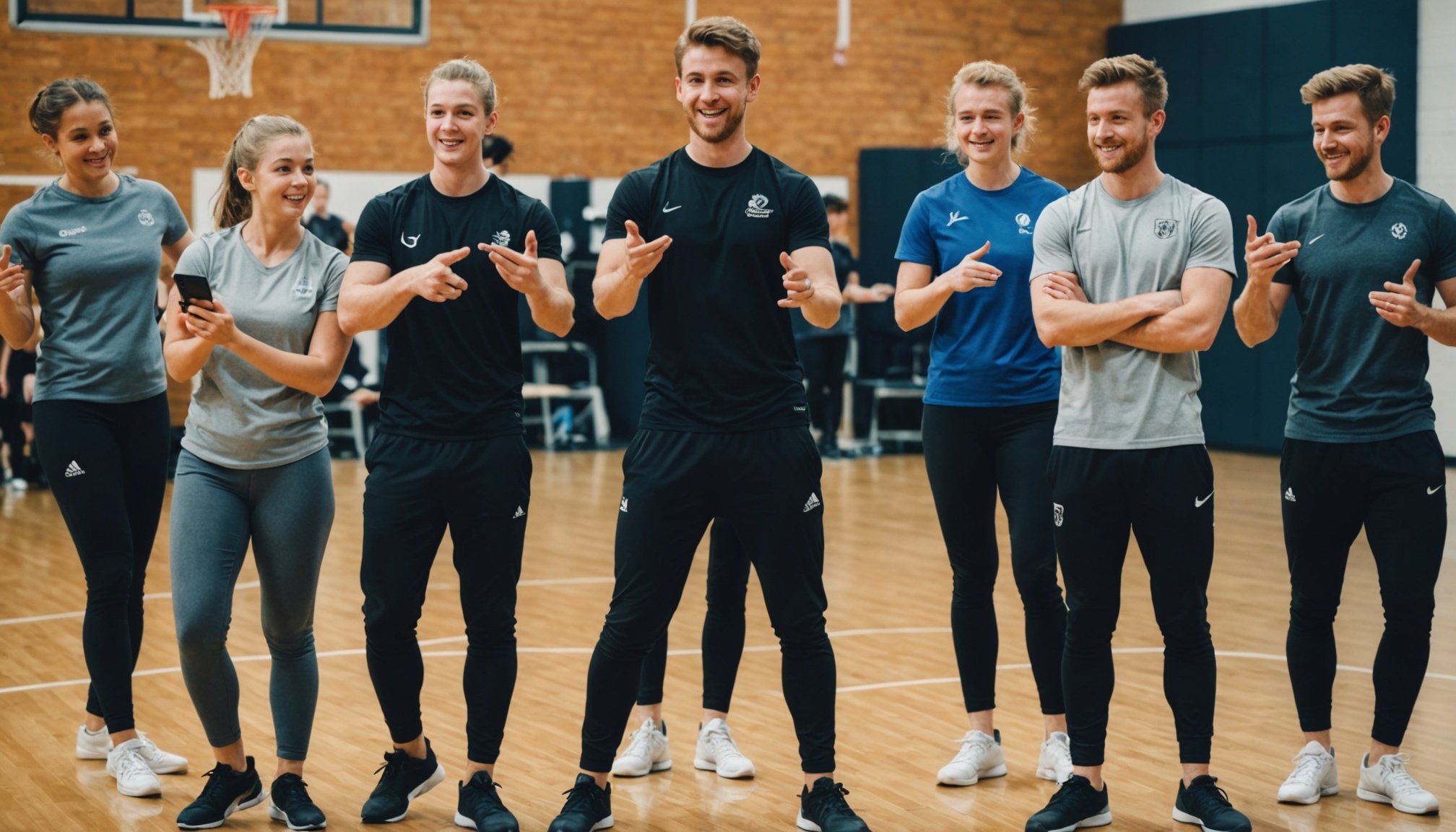Understanding the Importance of Social Media for Dance Schools
In today’s digital age, social media marketing has become an indispensable tool for dance schools striving to maintain competitiveness. These platforms play an integral role in modern marketing strategies, given their vast reach and engagement capabilities.
Social media offers a multitude of benefits for independent dance schools. It provides a cost-effective means of increasing visibility, particularly for schools that may not have the budget for traditional advertising. Additionally, it fosters student engagement by creating a community where students can share their experiences, interact with instructors, and showcase their talents. This engagement not only helps in retaining current students but also attracts new prospects.
This might interest you : Transform your morning coffee sales: proven instagram strategies for uk cafés
Statistics indicate that a significant portion of potential dance students are active on social media. By leveraging platforms like Instagram, Facebook, and TikTok, dance schools can target these younger demographics effectively. According to recent studies, students are more likely to discover and interact with brands on social media than through any other medium. Therefore, a robust online presence is not just beneficial, but essential for growth.
When done correctly, social media marketing can elevate a dance school’s reputation, broaden its audience, and essentially, transform it into a thriving community hub. This showcases the potential of these digital platforms in reshaping traditional marketing efforts for the better.
Topic to read : Proven strategies for uk accountants to boost client engagement and acquisition via linkedin
Choosing the Right Social Media Platforms
Selecting the appropriate social media platforms is crucial for enhancing your brand’s presence and engaging effectively with your audience. With various platforms like Instagram, Facebook, and TikTok, understanding your target audience’s preferences is the first step in platform selection.
Major Social Media Platforms Overview
- Instagram: Ideal for visual content and younger demographics. It’s a hotspot for influencers and brands aiming to connect through striking visuals and stories.
- Facebook: Offers a broader audience reach, suitable for businesses looking to engage with a diverse user base via groups, pages, and ads.
- TikTok: Perfect for brands targeting Gen Z, known for its short video format that encourages creativity and trend-setting content.
Evaluating Audience Activity
To maximise your audience reach, research where your target audience spends most of their time online. Analysing audience activity on different platforms helps tailor your content strategy effectively. Tools like analytics dashboards provided by the platforms can offer insights into user demographics and engagement patterns.
Best Practices for Platform Presence
When establishing your presence, consistency is key. Maintaining a regular posting schedule, engaging with followers through comments or messages, and collaborating with influencers can amplify your brand’s visibility. Always align your content strategy with the platform’s strengths to deliver maximum impact.
Content Creation Strategies for Dance Schools
Creating engaging content for a dance school requires visual storytelling to connect with the audience. Videos remain a powerful tool, showcasing performances or offering behind-the-scenes glimpses of rehearsals. Such dynamic content captures the artistry and passion inherent in dance. High-quality images are equally important, with the ability to freeze a moment of grace or intensity in time, making them ideal for social media platforms where quick scrolling demands eye-catching visuals.
Visual storytelling doesn’t stop at just videos and images. Written content, such as stories or blog posts about dance techniques or dancer profiles, can deepen connections with the audience. These stories offer insights into the dance world and invite readers to learn more. Tips for crafting engaging content include maintaining authenticity and showcasing the dance school’s unique style, fostering a genuine connection with readers or viewers.
Consistent branding and messaging are crucial. This not only helps in building recognition but also ensures that every piece of content creation echoes the school’s values and artistic vision. Aligning visual and written elements creates a cohesive narrative, strengthening the school’s identity in the crowded digital space. Such thoughtful content creation can set a dance school apart and foster a dedicated community.
Engaging Your Audience Effectively
Engaging with your audience is crucial in creating a vibrant and active community. One effective technique to enhance audience engagement is by encouraging interaction and participation through meaningful activities. Hosting online events like live tutorials or Q&A sessions allows real-time interaction, providing a platform for addressing queries directly. Such events not only clarify doubts but also create a sense of belonging among participants, fostering a community building environment.
Additionally, implementing the power of user-generated content and testimonials can significantly boost engagement levels. Inviting your audience to contribute content actively engages them, making them feel valued and heard. Testimonials further reinforce trust and authenticity, as prospective participants can relate to real experiences shared by their peers, enhancing the community’s credibility.
To ensure these efforts are successful, it’s essential to provide clear incentives for participation. This could include recognition within the community or minor rewards, motivating more individuals to get involved. A sustained approach towards fostering interaction is key; consistent engagement retains interest and encourages continuous participation, making the community feel dynamic and inclusive.
By maintaining focus on these techniques, building a thriving and interactive community becomes not just feasible, but an enjoyable and rewarding journey for both organizers and participants.
Advertising Options on Social Media
Social media offers various advertising options that cater to different business needs. Platforms like Facebook, Instagram, and TikTok enable promotions, helping businesses reach their desired audience. A crucial element of social media advertising is target marketing, which allows advertisers to reach specific demographics based on interests, behaviour, and more.
Ad Targeting and Budgeting Strategies
For effective ad targeting, it’s essential to define your audience clearly. This involves using tools provided by social media platforms. They offer advanced targeting options like age, gender, location, and even interests, ensuring ads are seen by potential customers. Budgeting also plays a critical role. Businesses can control spending by setting daily or lifetime budgets, optimizing costs while still achieving desired results.
- Precision Targeting: Define demographics and interests.
- Flexible Budgeting: Manage spending effectively.
- Analytics Usage: Measure and refine strategies.
Successful Ad Campaigns Examples
Dance schools have leveraged social media to attract students successfully. By targeting local communities and showcasing engaging dance content, they have increased enrolment. Employing eye-catching visuals and testimonials, these campaigns have been able to stand out among competitors. They effectively utilized platform features like stories and live sessions, enhancing direct engagement with their audience, exemplifying how strategic promotion can yield fruitful results.
Measuring Success and Analytics
To effectively gauge the success of your social media campaigns, understanding and utilising analytics is crucial. Firstly, identifying key performance indicators (KPIs) is essential. Common KPIs include engagement rates, click-through rates, conversion rates, and audience growth. These performance metrics allow you to evaluate how well your content resonates with your audience.
Various tools can assist in tracking these metrics. Social media platforms often provide built-in analytics tools. Third-party applications such as Google Analytics or Hootsuite offer more detailed insights into campaign evaluation. These tools can reveal not just how many people engage with your content but also the depth of this interaction, such as time spent on a post or the path taken after clicking a link.
Once you gather data, adjusting your strategy becomes a detective task. Analytical insights might suggest refining your content, changing post frequencies, or even rethinking your target demographic. For instance, if your engagement metrics show a decline, consider adjusting your content strategy or timing to better meet your audience’s preferences.
Incorporate these insights consistently to boost the effectiveness of future campaigns and ensure sustained growth, leveraging analytics for informed decision-making. After all, in the world of digital marketing, measurement is the key to mastering momentum.
Case Studies of Successful Social Media Marketing
Exploring case studies of successful social media marketing can illuminate the path for independent dance schools aiming to expand their audience. One such success story is that of a renowned dance studio that achieved remarkable online growth by implementing authentic storytelling through video content. Their approach showcased daily life at the studio, fostering a connection with their audience.
Another dance school found success by focusing on engagement through interactive posts. Polls, quizzes, and behind-the-scenes content helped them increase their follower count and build a community of dance enthusiasts. These best practices illustrate how tailoring content to engage potential students can significantly improve reach and impact.
Adapting and evolving marketing tactics is another crucial takeaway from their journey. Initially, these schools faced challenges with low engagement rates. However, by analyzing which content styles resonated best with their audience, they refined their strategies. This willingness to pivot and focus on audience-driven content proved essential to their triumph.
Most importantly, these case studies underscore the power of authenticity and community engagement. By cultivating a genuine voice and committing to regular updates, independent dance schools can create lasting impressions and build a devoted online community.











